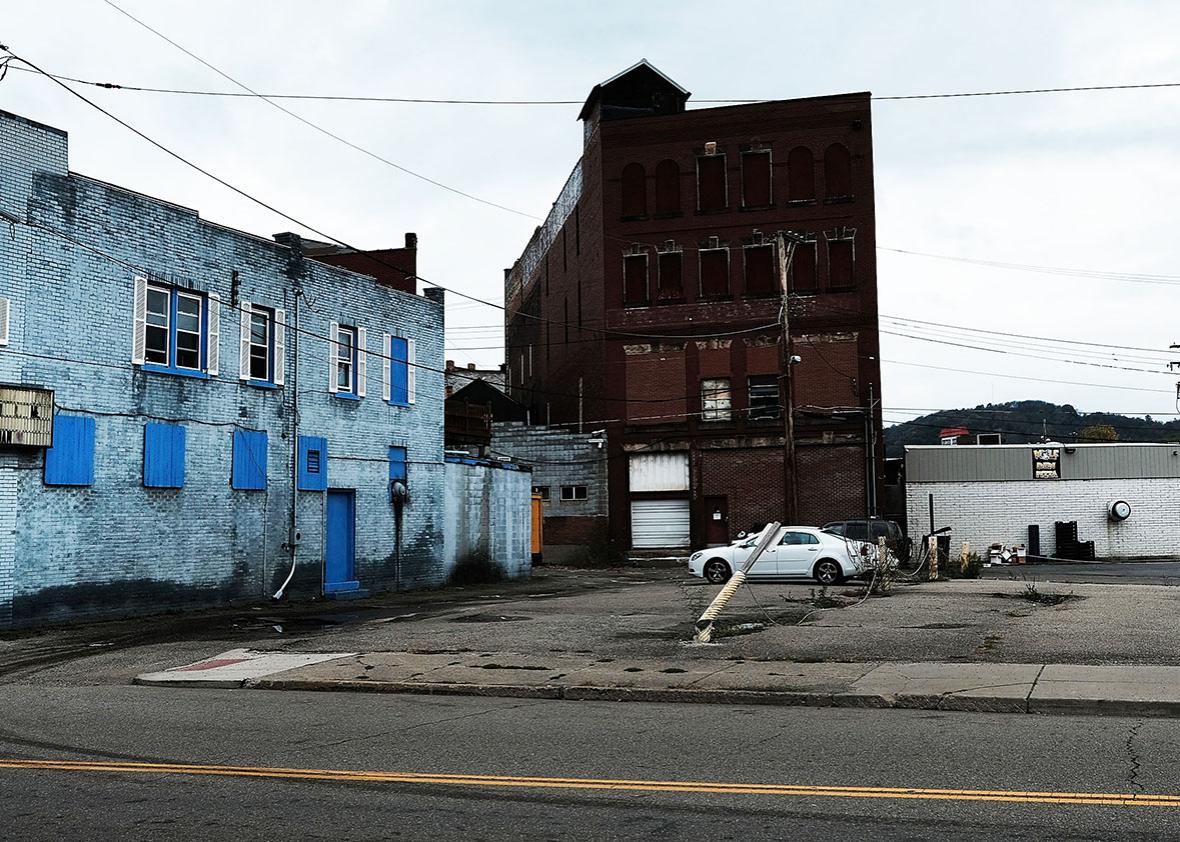One of the darkest theories about President-elect Donald Trump’s electoral upset is the idea that the opioid epidemic ripping across middle America played a significant role in the outcome of this election.
There seems to be a correlation between places that went heavily for Trump and areas struck hard by the opioid crisis. This has turned up anecdotally, for example, with photojournalist Chris Arnade, known for his “Faces of Addiction” series, saying he “fell into” writing about Trump supporters while documenting addiction. “Wherever I see hope exiting,” he tweeted, “I see Trump and drugs entering.” For Arnade and others, it feels like no coincidence that Trump did best in counties with higher mortality rates.
That’s also what Shannon Monnat, a rural sociologist and demographer at Penn State, found when she analyzed voting data in her recent paper titled “Deaths of Despair and Support for Trump in the 2016 Presidential Election.” According to her analysis, Trump’s margins over Mitt Romney were highest in counties with higher than average drug, alcohol, and suicide mortality rates.
Monnat’s research focuses on the industrial Midwest, New England, and Appalachia. “These places,” said Monnat, “have experienced a perfect storm that facilitates addiction, depression, and suicide,” hence the “deaths of despair” moniker.
Monnat’s findings are part of a larger trend. Last year Princeton economists Anne Case and Angus Deaton discovered that the death rate for middle-aged white Americans, particularly those with a high school education or less, jumped 20 percent between 1999 and 2013, which would mean half a million more people died during those years than would have if rates had remained flat. Further analysis of the data by Andrew Gelman in Slate shows that there are several reasons to be skeptical of that statistic, though there does appear to be increasing mortality among white women under the age of 52.* Meanwhile, mortality rates for every other group—even whites abroad—have been declining. (During the primaries, Jeff Guo, at the Washington Post’s Wonkblog, found that “death predicted” a vote for Trump. Wherever whites were dying fastest, Trump performed best.)
Ultimately, this connection is just a correlation, with unclear causation. It seems likely it’s a manifestation of another correlation in the areas studied—between the sluggish economic recovery in rural, mostly white areas and support for Trump (drug addicts are more likely to be of lower economic status).* The whys behind many of these correlations are still unclear and may never become clear. Monnat’s paper acknowledges that there is no clear causal relationship between drugs, alcohol, and suicide and support for Trump. “To suggest otherwise,” wrote Monnat, “ignores the economic, social, and demographic complexities that drive human behavior and the contexts of the communities where these voters live.”
Either way, the real question now is whether the president-elect has a serious plan for addressing the woes of these voters. When it comes to the opioid crisis, his own remarks on the campaign trail suggest he thinks building a wall on the Mexico border to be a main solution to the problem. For one thing, the latest opioid making its deadly rounds, illicit fentanyl, is more likely to be unwittingly delivered by mail than it is to come across the border. But more to the point, the wall proposal is a deeply unsophisticated response to this evolving complex public health problem.
Most concerning still are Trump’s Cabinet picks. Jeff Sessions, tapped for attorney general, has been called a “drug war dinosaur.” In 1986 he quipped that the KKK “was OK until I found out they smoked pot.” During a Senate hearing on drugs last April, Sessions said, “Good people don’t smoke marijuana.” Imagine what he thinks about people who are suffering from opioid or heroin addiction.
With Sessions on Trump’s team, it’s possible that consensus to roll back the drug war among Democrats and Republicans could derail. Locking up people with addiction or building a border wall will not solve the country’s opioid crisis, nor will it ease the suffering that may have helped elect Trump in the first place.
Update, Dec. 19, 2016: This paragraph has been updated to include additional information on the Case-Deaton numbers. (Return.)
Correction, Dec. 19, 2016: This post originally mischaracterized the correlation between lower economic status and Trump support. The correlation was between Trump support and sluggish economic recovery in rural, mostly white areas, not just lower economic status in general. (Return.)
